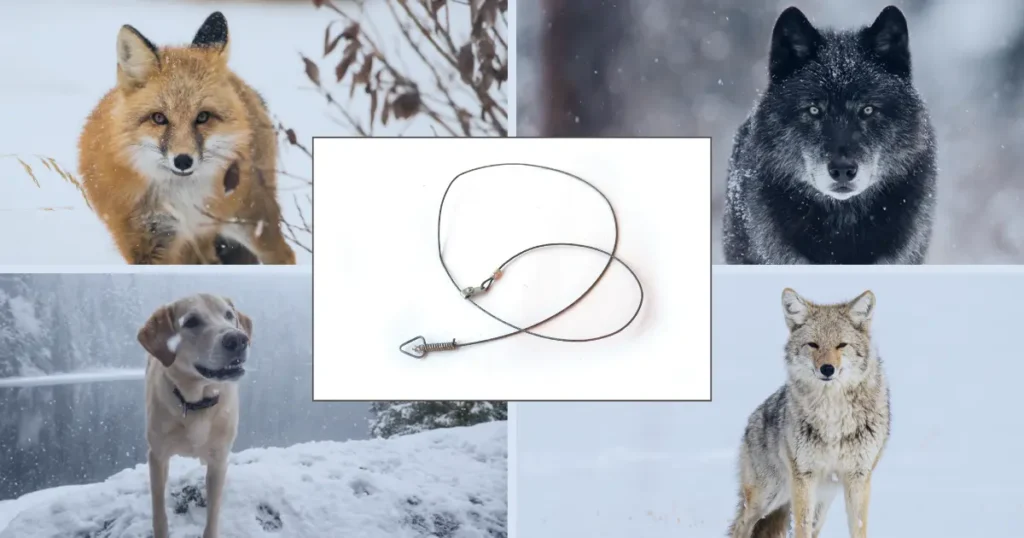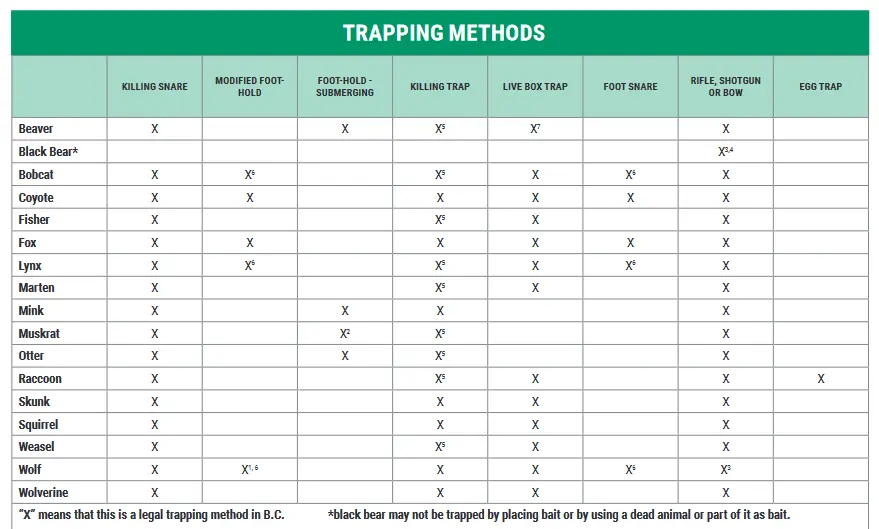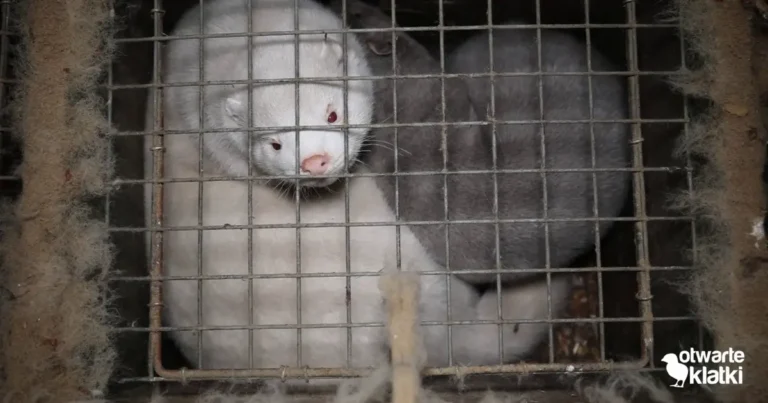
Snares are a commonly used trap to kill wildlife in Canada, but it is absent from an international agreement on trapping standards that Canada is a party to. In 1999, The Agreement on International Humane Trapping Standards (AIHTS) was ratified between Canada, Russia, and the European Union. This legally-binding agreement was created to establish welfare standards for traps, in part so that Canadian fur products could be sold on the European market in the commerical fur trade, with a promise that animals are trapped using “humane” trapping methods.
Several traps used in Canada are “certified humane” under this agreement, such as Conibears and leg-holds (we firmly believe no traps on this list are humane, and there has been considerable research showing the problems with this agreement and the traps themselves). Notably absent in this agreement and the AIHTS-certified trap list are killing neck snares. This is despite their widespread use to kill wildlife in Canada.
What are killing neck snares?
Snares are simple devices that cause significant suffering. They are primarily used to kill canids such as wolves, foxes, and coyotes. The trap consists of a wire loop that is designed to catch animals by the neck, tightening as animals struggle to free themselves. Snares strangle animals to death, but in many cases, they fail, leaving animals to suffer for extended periods of time with the cable constricting their necks. There’s a term in trapping known as ‘jellyhead’, where a snared animal’s head will become swollen from the constriction on their neck and blood pressure to the brain.
One study notes that less than 50% of canids caught in snares lose consciousness within 5 minutes. For a killing trap to meet the AIHTS standards, at least 80% of animals must become unconscious leading to death within this time limit. The failure of killing neck snares to kill animals instantly reveals why they not certified traps under the AIHTS. But despite this, they’re used across Canada to kill wildlife for the commercial fur trade.
Click the video below to watch the short segment on how snare traps work (begins at 4:18).
Uncertified, inhumane, and legal
Article 7(c) in the AIHTS writes that the relevant authorities of the signatories ensure to: “. . . prohibit the use of traps that are not certified in accordance with the Standards.” If snares are not certified traps under the AIHTS, isn’t there an obligation to prohibit their use in Canada? The answer to this lies in a footnote in Article 7 that effectively exempts the use of traps under two conditions: 1) individuals construct and use the traps themselves, and 2) the traps comply with designs approved by the relevant authorities. But snares are commercially produced and can be bought online and in hunting retail stores, a far departure from the condition that individuals construct their own traps.
This footnote provides insight into why snares are still used and authorized for use in Canada, despite not being certified under the AIHTS. But it also raises questions about the proliferation and use of commercial snare traps in light of the condition that individuals must construct the traps themselves. These devices are approved by provincial authorities, manufactured by companies, sold by retailers, purchased by trappers, and result in significant animal suffering for Canadian wildlife who become trapped in them.
The use of snares isn’t apparent in the narratives from governments and the fur industry, who publicly insist that wildlife are trapped in Canada with certified traps and humane trapping methods. Information on the Government of BC’s website reads:
"Currently, a person using killing traps for beaver, bobcat, fisher, lynx, marten, muskrat, otter, raccoon and weasels (least, short-tailed, and long-tailed), or restraining traps for beaver (cage traps), bobcat, lynx and wolf is required, by law, to use only species-specific traps included in B.C.’s trapping regulations which have been certified under the Agreement." (Emphasis added)
A look into BC’s Trapping Regulations synopsis shows that the province allows killing neck snares to be used for all fur-bearing animals listed (except for black bears), given that certain design conditions are met, such as having locking mechanisms on the snares.

Killing neck snares are uncertified, legal, inhumane, and widely used. The result is that the pelts sold on the European market for fur fashion products come from Canadian wildlife who suffered tremendously, an outcome that the AIHTS was designed to prevent. As the BC government writes on its webpage: “The Agreement serves to ensure that only certified traps that meet or exceed specific animal welfare thresholds are used to trap these animals. Further, it protects Canada’s access to the European fur market and thus helps protect the wild fur industry in Canada.”
With this kind of narrative around the AIHTS and trapping in Canada, the public (both in Canada and in Europe) might not know that killing neck snares are still commonly used to kill Canadian wildlife for their pelts in the commercial fur trade.
Snares and the killing of non-target animals
One of the considerations in the AIHTS is that the design of traps should minimize the capture of non-target animals. Here again, snares fail. There are numerous reports of snares capturing non-target animals including birds, ungulates, and even pets. Over a seven year period, the BC government received 24 reports of pets caught in snares, several of them fatally. Across Canada, reports of dogs being injured and killed by snares are tragically common. As snares are typically set for canids, their placement increases risks for dogs as they are set at the height of their necks in the line of travel, and trappers may use bait or scents to lure animals towards them.
The Fur-Bearers created an educational video to release your dog or cat in an emergency situation if they become caught in traps. Please share this video to those who may find the information useful.
Take Action!
Contact your MLA or MPP. You can look up your elected representative using our resource page by clicking here. As trapping is a provincially regulated activity, raise your concerns about the use of snare traps to your provincial representative. It is important to speak to the issue from your own voice and what it means for you as a citizen, a dog or cat guardian, and as a wildlife advocate that opposes the use of traps.
This article was originally published on October 23, 2023.
